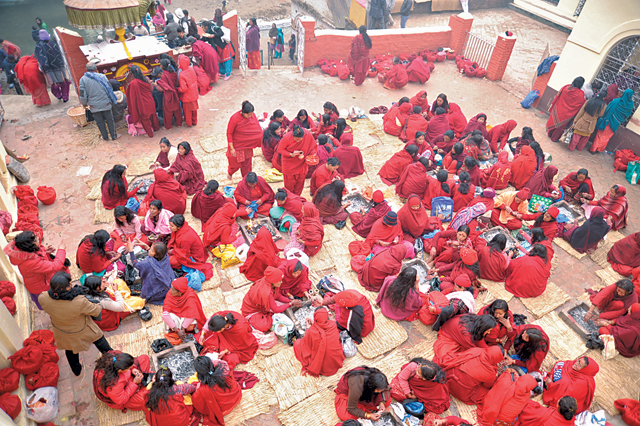Swasthani brata is an annual Hindu festival in which women fast for their family’s prosperity. Every day for a month, family members also read a chapter from the Swasthani book, which mostly consists of religious stories. We all enjoy these tales, but over the years, I am beginning to wonder about everything else it could have given me.

I remember as a child, I used to retell stories from the Swasthani. It is normal for any Nepali family to tell these stories to family members everyday in the month of Magh (January/February). But I went to a whole new level and narrated them to my friends and almost everyone around me. I lived and relived them. In recent years I am beginning to think how big an impact these stories have had on my life.
There is one particular tale I seemed to have liked for reasons beyond my understanding, both as a child and even now. It is the story of Goma. Born to parents who longed for a child for years and prayed their hearts out, Goma was seven when Lord Shiva cursed her. She was told she’d lose her parents, their money and would be married to a man of seventy. When the time came, all of that happened. Her father couldn’t find her an appropriate husband and a seventy year old threatened to take his own life if he wasn’t married to Goma. With little choice, her parents got Goma married to the old man and bid her farewell. They climbed a tree to look at Goma leave which is when they all died. Following the wedding, a burglar took everything Goma and her husband had. She was left alone, penniless and an orphan. The story proceeds with additional plots and people getting passage to heaven after misery, but I don’t remember most of it. What this story has done to me is something I am still trying to figure out.
The plot revolves around misery which was probably the first taste of dissatisfaction I got as a kid. Sitting on the lap of my grandmother, I listened to my granddad enunciate every word with a professional efficiency that comes from telling the stories over and over again, every year. I probably looked at him in disbelief waiting for the tale to take a turn and for the ‘good guys’ to win, which never happened. Heaven meant but little. I wanted Goma to be happy. She probably did.
But was it too little too late?
It has been years since I have heard the story. But the aftermath of whatever I learned as a kid still lingers in my conscience as an adult. My own grievances help me relate to that of Goma. It sounds incredible but the smaller ‘disasters’ of my life like parking tickets comes nowhere close to the miseries that Goma went through. It is strange how a character so distant, both in time and location can help me through my life at an age when I don’t feel connected to many aspects of religion as a whole. To me, Goma walks outside of the mythological book, as a part of my life. This connection that religion has made with me is probably the strongest I have felt so far.
So today I wonder how big a role these characters can play for others. Every year we focus on the mythological or religious aspects of Swasthani but the impact it has had on children and adults is seldom discussed. I walk through my life still making Goma very much a part of it. Do many people do that? Do these characters enter our lives when we need them to? If yes, the stories we barely talk about these days deserve a lot more reverence.










